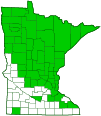hairy-stem gooseberry
(Ribes hirtellum)
Conservation • Wetland • Description • Habitat • Ecology • Use • Distribution • Taxonomy
Description |
||
Hairy-stem gooseberry is an erect shrub that rises on multiple stems. The stems are erect, arching, or sprawling, and 20″ to 60″ long. Long stems may arch to the ground and root at the tip, forming a crown that sends up new stems. Other stems may sprawl on the ground and root at the nodes, forming several root crowns. First-year and second-year stems are slender and hairless. Branches are hairless. Older stems are densely covered near the base with fine bristles. The stems and branches may have 1 to 3 straight, stout, ⅛″ to 5 ⁄16″ long spines just below the nodes, though these are poorly developed and sometimes absent. They are also sparsely covered with bristles between the nodes, though these are eventually shed. The leaves are alternate and occur singly or in small clusters (fascicles) of 2 or 3. They are on ¼″ to ⅝″ long leaf stalks that are covered with long, soft hairs. The leaf blades are thin, firm, circular in outline, ⅜″ to ¾″ long, and ⅝″ to 1″ wide. They are palmately divided into 3 or 5 lobes. The lobes may be further divided into 3 or 5 shallow secondary lobes. The base is broadly tapered or nearly squared off. The upper surface is dark green and sparsely hairy or nearly hairless. The lower surface pale green and sparsely to moderately hairy. Neither surface has glands. The margins are toothed with rounded teeth. The inflorescence is a solitary flower or a loose, unbranched cluster of 2 or 3 flowers. Each flower droops downward on a slender, 1 ⁄16″ to 3 ⁄16″ long stalk (pedicel). The pedicel is hairless and is not jointed. There is a pair of bracts at the base of the pedicel. The bracts are 1 ⁄32″ to 1 ⁄16″ long, much shorter than the flower stalk, and are fringed with hairs. At the base of the flower is a smooth, green ovary. Above the ovary is a smooth, greenish-white, cone-shaped or bell-shaped, 1 ⁄16″ to ⅛″ long, cup-like structure (hypanthium). Neither the ovary nor the hypanthium have hairs or prickles on the surface. At the end of the hypanthium are 5 sepal lobes. The lobes are greenish-white or yellowish-white, 1 ⁄16″ to ⅛″ long, and initially erect but soon bending outwards or somewhat backwards. The sepal lobes shorter than the calyx tube (the outer portion of the hypanthium), and are often tinged with purple. Also at the end of the hypanthium are 5 inversely egg-shaped, 1 ⁄16″ to ⅛″ long petals. The petals are white, sometimes tinged with purple, erect, and converging but not actually fused. Emerging from the hypanthium are 5 stamens with cream-colored anthers, and 2 styles. The stamens are 2 times as long as the petals. The filaments are ⅛″ to 3 ⁄16″ long. The styles are 3 ⁄16″ to 5 ⁄16″ long, fused together and hairy on the lower half, separate on the upper half. The fruit is a globular, ¼″ to 7 ⁄16″ in diameter berry. Immature berries are green with narrow, pale green, vertical stripes. When ripe they are purplish. There are no prickles or hairs on the surface of the berry. Berries mature early early July to mid-August. |
||
Height |
||
20″ to 60″ |
||
Flower Color |
||
Greenish-white and white |
||
Similar Species |
||
Eastern prickly gooseberry (Ribes cynosbati) ovary is densely covered with stiff, gland-tipped hairs. The fruit is covered with stiff, broad-based prickles. Missouri gooseberry (Ribes missouriense) is a taller plant, with stems up to 80″ long. Spines at the node are well-developed and prominent. The sepal lobes, filaments, and styles are all much longer. The sepal lobes are longer than the calyx tube and are strongly bent backward. The filaments are 5 ⁄16″ to 7 ⁄16″ long, extending well beyond the petals. The styles are 7 ⁄16″ to ⅝″ long and are fused together for ⅞ of their length. The plant is found throughout southern Minnesota and is absent from most of the north. |
||
Habitat |
||
Wet. Tamarack swamps, shrub swamps, riverbottom forests, sedge meadows, marshes, ditches, disturbed sites. Partial sun. |
||
Ecology |
||
Flowering |
||
Early mid-May to early June |
||
Pests and Diseases |
||
|
||
Use |
||
|
||
Distribution |
||||
|
Sources |
|||
| 4/30/2023 | ||||
Nativity |
||||
Native |
||||
Occurrence |
||||
Common |
||||
Taxonomy |
|||
| Kingdom | Plantae (Plants) | ||
| Division | Tracheophyta (Vascular Plants) | ||
| Subdivision | Spermatophytina (Seed Plants) | ||
| Class | Magnoliopsida (Dicots) | ||
| Superorder | Saxifraganae | ||
Order |
Saxifragales (saxifrages, stonecrops, and allies) | ||
Family |
Grossulariaceae (gooseberry) | ||
| Genus | Ribes (currants and gooseberries) | ||
| Subgenus | Grossularia | ||
| Section | Grossularia | ||
Synonyms |
|||
Grossularia hirtella Ribes hirtellum var. calcicola Ribes hirtellum var. saxosum Ribes oxyacanthoides var. calcicola Ribes oxyacanthoides var. hirtellum Ribes oxyacanthoides var. saxosum |
|||
Common Names |
|||
American gooseberry hairy gooseberry hairy-stem gooseberry hairystem gooseberry northern gooseberry smooth gooseberry swamp gooseberry |
|||
Glossary
Bract
Modified leaf at the base of a flower stalk, flower cluster, or inflorescence.
Calyx
The flower cup. May be the group of outer floral leaves (sepals) collectively, or a tube with lobes.
Fascicle
A small bundle or cluster, often sheathed at the base, as with pine needles.
Filament
The thread-like stalk of a stamen which supports the anther.
Hypanthium
A cup-like tubular structure of a flower formed from the fused bases of sepals, petals, and stamens, that surrounds the pistil. Its presence is diagnostic of many families, including Rose, Gooseberry, and Pea.
Node
The small swelling of the stem from which one or more leaves, branches, or buds originate.
Palmate
Similar to a hand. Having more than three lobes or leaflets that radiate from a single point at the base of the leaf.
Pedicel
On plants: the stalk of a single flower in a cluster of flowers. On insects: the second segment of the antennae. On Hymenoptera and Araneae: the narrow stalk connecting the thorax to the abdomen: the preferred term is petiole.
Sepal
An outer floral leaf, usually green but sometimes colored, at the base of a flower.
Stamen
The male reproductive organ of a flower consisting of an pollen-producing anther on a supporting filament.
Visitor Photos |
|||||
Share your photo of this plant. |
|||||
| This button not working for you? Simply email us at info@MinnesotaSeasons.com. Attach one or more photos and, if you like, a caption. |
|||||
|
|||||
MinnesotaSeasons.com Photos |
|||||
Plant |
|||||
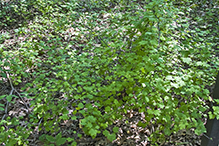 |
|||||
Leaves |
|||||
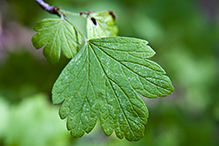 |
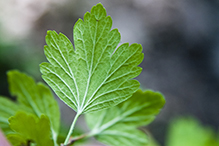 |
||||
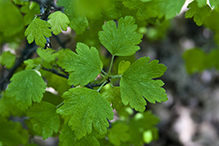 |
|||||
Stem |
|||||
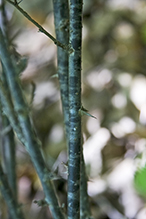 |
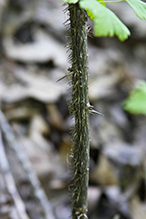 |
||||
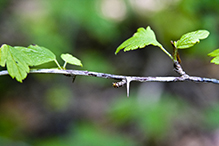 |
|||||

Slideshows |
||

Visitor Videos |
|||
Share your video of this plant. |
|||
| This button not working for you? Simply email us at info@MinnesotaSeasons.com. Attach a video, a YouTube link, or a cloud storage link. |
|||
Other Videos |
|||

Visitor Sightings |
|||||
Report a sighting of this plant. |
|||||
| This button not working for you? Simply email us at info@MinnesotaSeasons.com. Be sure to include a location. |
|||||
|
|||||
MinnesotaSeasons.com Sightings |
|||||

|
Created: Last Updated: © MinnesotaSeasons.com. All rights reserved. |
